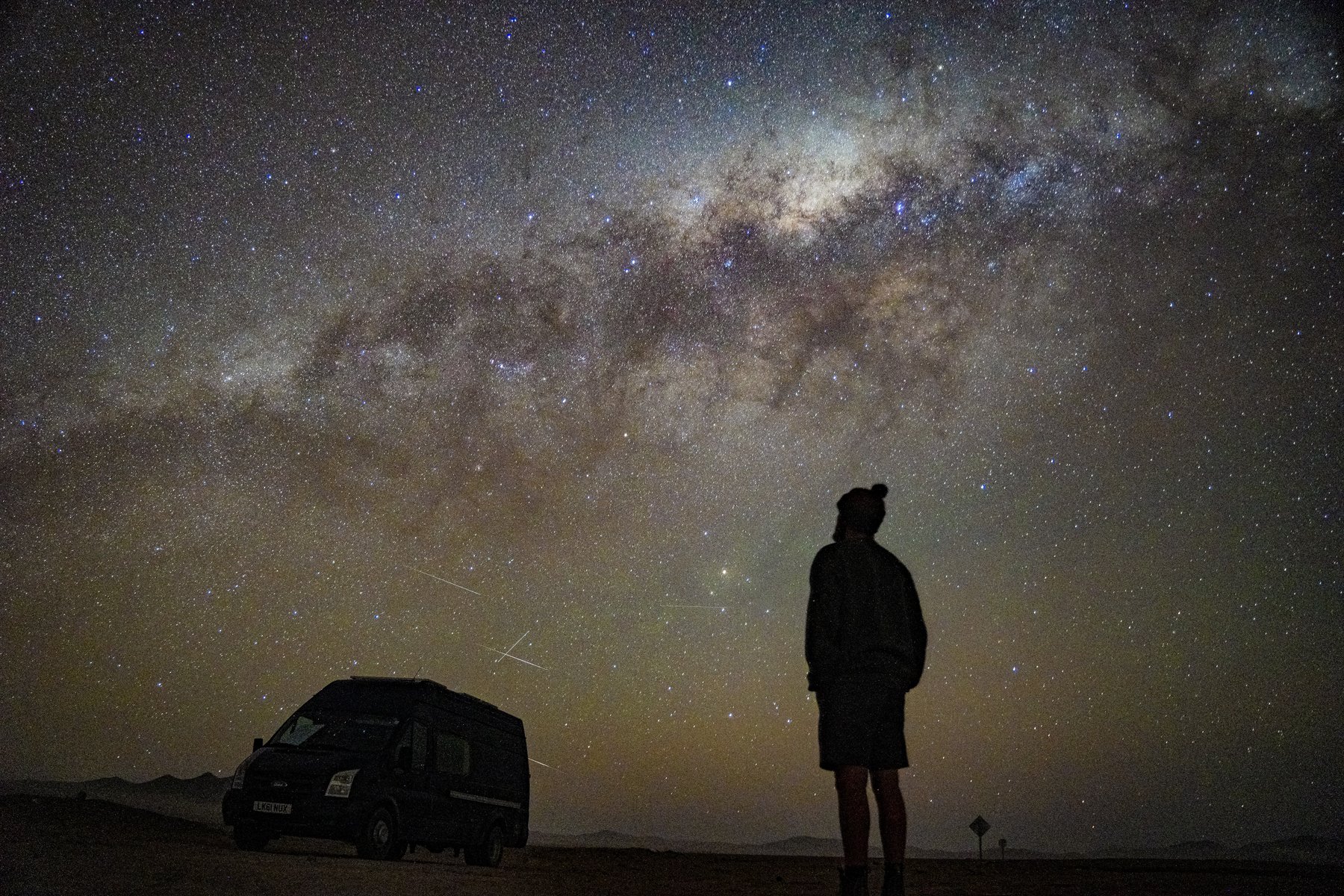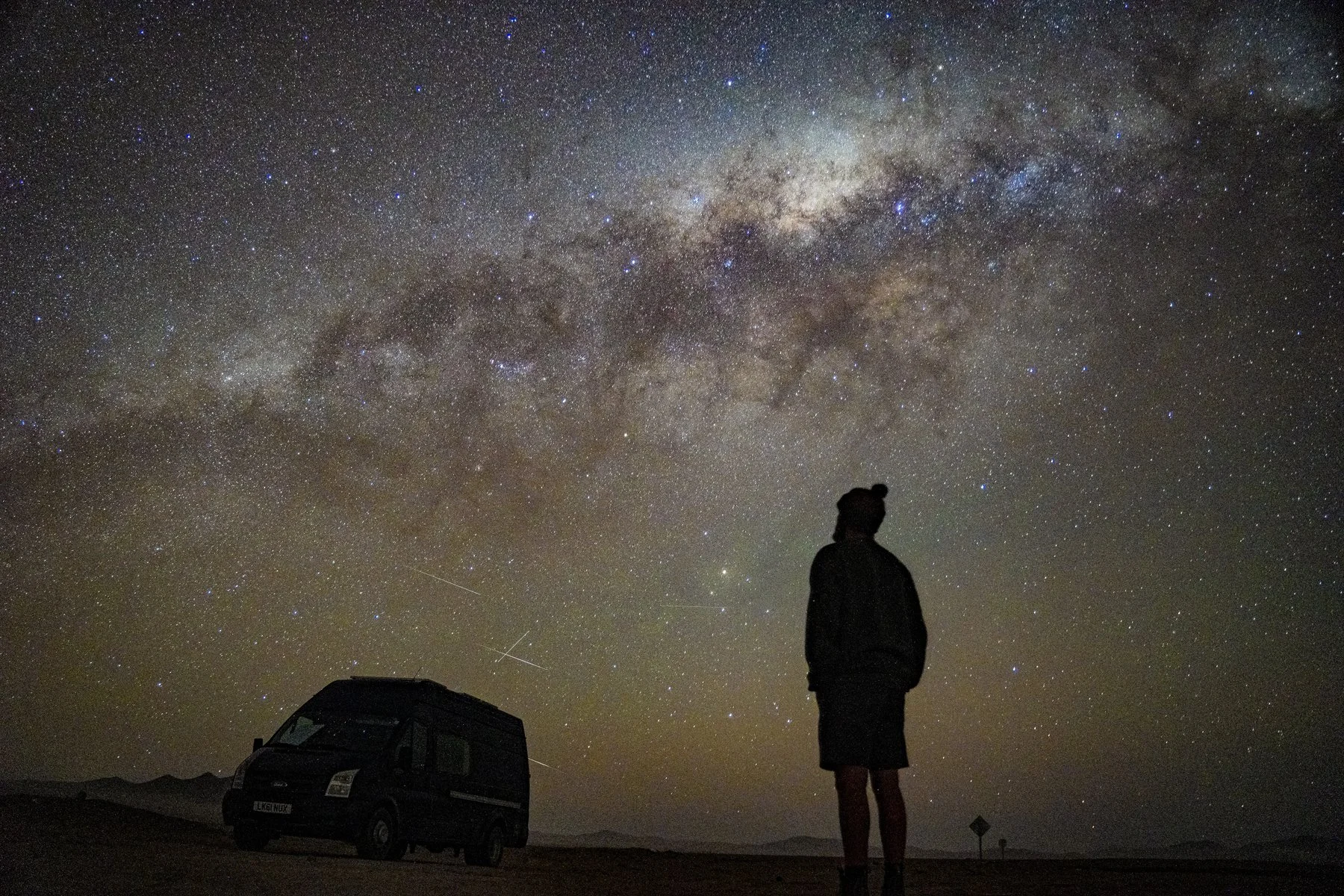Detour #326: A Heavenly Drive on The Highway of Stars, Chile
The atacama desert is where detourism meets astrotourism on a drive around the astronomical triangle.
“This is the best place on our planet to observe the universe,” our observatory guide exclaims before adding, “and that’s an undisputed fact”.
The Atacama Desert in northern Chile is widely regarded as the best place in the world for stargazing. Due to its unique geographical location, climate, and atmosphere, the Atacama Desert has more than 300 clear nights per year. Furthermore, the high altitude means the air is thinner and therefore there is less atmosphere for the light to pass through, making stars look sharper. It’s also one of the driest places on earth, meaning there is less water vapour in the atmosphere to distort the light reaching us from space. Not to mention, there’s no light pollution emitted from the desert's stark landscape.
Astrotourism is a growing concept, and Chile is trying to position itself as the global capital. Part of that effort is Chile’s promotion of its growing network of roads that make up the Ruta de las Estrellas, or the Route of the Stars. The country’s first-ever road trip guide –Turismo Sobre Ruedas – recently published its second book, which is dedicated entirely to its northern roads and is heavily focused on Astrotourism. As a young man in school, I often dreamed of dedicating my life to the study of our universe, and so this detour is one I simply can’t miss.
I begin near Ruta 27, which runs alongside the Chile-Bolivia border, and head towards Ruta 23 via the Valley of the Moon and Mars Valley. The landscapes surrounding these roads are genuinely otherworldly, and the names are apt. I knew the area was meant to be good for stargazing, but I hadn’t imagined I’d feel this deeply immersed in Astrotourism before the sun had even set. The road meanders through miles of empty desert, dotted with rock formations that make you feel like you’re exploring another planet.
From the 23, I veer southward along Ruta 25, followed by the 5, before taking a quick detour along the B-710, towards one point of Chile's Astronomical Triangle (Triangulo Astronomico de Chile). It’s easy to see why astronomers flock here – northern Chile is home to roughly 70 per cent of the world’s astronomical infrastructure. Take a short break from driving because even visiting just one of these observatories is unforgettable.
I choose to visit the Paranal Observatory, home to the VLT (Very Large Telescope) – one of the most advanced optical telescopes in the world. It is operated by the ESO (European Southern Observatory) and has contributed to some groundbreaking discoveries. The technology here is unbelievable, and they’ll tell you all about the possible discoveries they’ll make when the construction of their new telescope – the ELT or Extremely Large Telescope – finishes in 2029. As I do, you’ll likely leave with a childlike sense of wonder and discovery.
Ruta 5 carries on south, and the astrotourism points of interest will continue almost as far as the central city of Santiago, Chile's Capital. I would highly recommend doing this road trip over several days, so you have some time to watch the spectacular desert sunsets before staying up to witness the equally impressive night sky. You can either do this on your own accord, or there are several tours operated out of San Pedro de Atacama.
On a final note, the best time to visit is between March and October, when the skies are clearest and temperatures are pleasantly mild. Plan your road trip around the lunar calendar, too – a full moon can wash out even the darkest skies. We learn that the hard way, but eventually are rewarded with the Atacama’s incredible night skies, arguably the best place on Earth to witness our awe-inspiring yet unfathomable universe.
I can’t help but feel both small and profoundly connected to the cosmos on this detour, and I suspect you will too.
Words & Photography James Hearne Instagram











One of the highest navigable routes in the world, the Ruta de Las Lagunas is an off-road adventure with many risks, but just as many rewards.